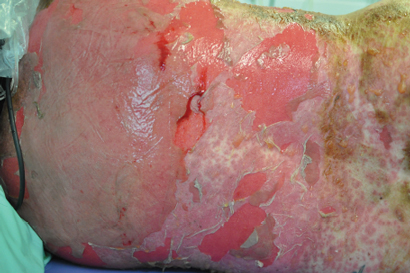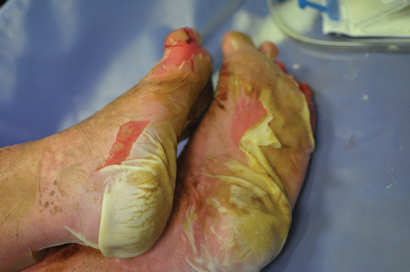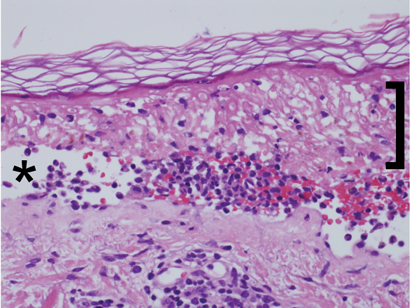Following the recommendations in 2006 of the Victorian Parliament Law Reform Committee,1 the Coroners Act 1985 (Vic) was amended. The revised Coroners Act 2008 (Vic)2 included “prevention”, to explicitly recognise the coroner’s role in public health and safety. The Law Reform Committee report identified the need for a multidisciplinary team to assist coroners to fulfil their prevention mandate. The Coroners Prevention Unit (CPU), within the Coroners Court of Victoria (CCV), was established in 2008, comprising personnel from medicine, nursing, law, public health and social sciences. The CPU reviews cases to identify prevention opportunities and assess the adequacy of health care diagnosis and treatment proximate to death. The CCV annual report for 2011–12 shows that about 10% of deaths reported to the coroner were referred to the CPU, including those resulting from suicide, homicide and unintentional injury, and those that occurred in a health care setting. The CPU reviews statements from family, friends and witnesses, medical records, forensic reports, statements from clinicians and expert opinions, before preparing advice regarding identified risks and protective factors to the coroner, who may then make recommendations for government and non-government organisations with or without an inquest. The overriding aim is to identify prevention opportunities, particularly any system changes that might prevent future similar deaths.
The death of an older woman from acute aortic dissection (AAD) at home, following discharge from a hospital emergency department (ED) after investigation for chest pain, led the coroner to review similar cases over recent years. After considering identification and review by the CPU of previous and subsequent deaths, expert opinion, and advice about the medicolegal challenges posed by such cases,3 the coroner concluded that a dialogue with Victorian emergency physicians (EPs) might enable opportunities for prevention to be better diffused.
Through this article, we aim to improve clinicians’ understanding of coronial processes and increase awareness of diagnostic difficulties in AAD by reporting the case, investigation and the roundtable discussion convened by the coroner between representatives of the CCV and Victorian EPs.
Case report
A 74-year-old woman woke after midnight with severe, sharp, left scapular pain radiating to both jaws, with nausea and sweating. She had a history of gout and hypertension, and was taking warfarin, allopurinol, telmisartan, felodipine and atenolol. Her condition was initially assessed by paramedics as possible ischaemic chest pain, although thoracic aortic dissection was recorded as a second possibility. The patient was monitored and an intravenous line inserted. Aspirin was withheld because of possible thoracic AAD. A mobile intensive care ambulance team continued management. An electrocardiogram (ECG) showed atrial fibrillation (heart rate, 44 beats/min) with T-wave inversion in lead I. Aspirin 300 mg and morphine in aliquots to 15 mg were administered, and the patient arrived in the ED at 01:07, 49 minutes after pain onset.
In the ED, a triage category 2 was allocated. Triage assessment noted chest pain starting in the scapular region and radiating to the jaw, but now also radiating all over the patient’s body. Nursing observations were a pulse rate of 45 beats/min, blood pressure of 175/79 mmHg, and no pain from 18 minutes after arrival in the ED. The doctor assessed the patient 103 minutes after arrival, noting sudden sharp pain (score, 10/10) in the left upper back and radiating to the jaw, with nausea. ECG showed atrial fibrillation with old inferior ST segment changes; troponin level was 0.02 µg/mL (reference interval, < 0.03 µg/mL); and international normalised ratio was 2.3. The diagnosis was musculoskeletal pain. A chest x-ray showed a markedly enlarged heart, and the repeat troponin level was 0.03 µg/mL. The patient was discharged at 07:30 for an outpatient stress ECG, arranged through her general practitioner.
At 13:00 that day, an ambulance was called when the patient was found collapsed and unresponsive at home. Despite resuscitation attempts, she was pronounced deceased. The death was reported to the coroner. The autopsy carried out at the Victorian Institute of Forensic Medicine showed “a posterior inferior wall tear of the aorta around the arch … [and] a second tear … just above the aortic valve(s)”.
The coroner referred the case to the CPU, which recommended statements from treating clinicians and expert emergency medicine opinion be obtained. The expert found a failure to convey the concerns of the first paramedic crew about the possibility of AAD to hospital staff, and that AAD had not been seriously considered by treating clinicians in the ED, despite the suggestive presentation. The expert believed that the outcome may have been different if surgery could have been organised before rupture, while acknowledging time constraints.
Coroner’s round table
After the inquest, the coroner convened a roundtable discussion on AAD, inviting senior EPs from Melbourne metropolitan hospitals. Seventeen EPs and directors of emergency medicine assembled at the CCV in August 2013, with the coroner, the coroner’s registrar, two EPs and two nurses from the CPU, and representatives of the Police Coronial Support Unit. A descriptive statistical overview and case summary was circulated before the meeting, outlining the frequency of reported deaths from AAD, with health service contact within 3 months of death, from 2010 to 2012.
The round table was chaired by a CPU EP (G A J), who requested participants’ cooperation in reaching conclusions about improving case detection of AAD in Victoria. It was emphasised that the purpose was to gather expertise, without intention to find fault or blame, in a safe environment where any comment or contribution would be welcomed. The coroner described the circumstances, the problems with case detection, and the hope that the combined expertise and experience of the group might identify system changes to improve outcomes. This was followed by an overview of AAD by the EP who had provided expert opinion in the case, along with recommendations.
Robust discussion followed. It was acknowledged that it is imperative for clinicians not to miss the vastly more common condition, ischaemic heart disease, also a potentially lethal disease, and that there are sensitive, readily available diagnostic tests that reliably enable exclusion of that diagnosis. While AAD is mostly excluded by computed tomography (CT) scanning, it was noted that CT is not always easily available and is potentially harmful due to radiation and risks from contrast media. Therefore, although investigating and excluding AAD more often with CT scanning might improve detection, this might be counterproductive in producing more harm in the long term, given the rarity of the disease.
While many people with AAD present without classical features, making detection difficult, it was agreed that the diagnosis is often simply not considered, and this is where preventive measures may be particularly valuable.
Important system issues identified included seniority of staff assessing people presenting with chest pain, and the use of chest pain and acute coronary syndrome (ACS) care pathways. Supervision has largely been provided through the development of emergency medicine as a specialty in Australia, but there may still be opportunities to improve the degree of supervision, particularly in smaller hospitals and after hours. The group concurred that ACS care pathways may be having a negative effect on detection of AAD, noting the importance of exclusion of other serious diseases, including AAD, both at the beginning and the end of such pathways. Senior clinician review before discharge, with consideration of rare serious causes of chest pain, was recommended as a routine component.
Similarly, implementation of time-based performance targets in Australian EDs through the National Emergency Access Target may be compromising the care of people with AAD and other uncommon diseases.4,5 Imperatives to discharge patients within 4 hours may limit opportunities for considered reflection of unusual causes of presentation. While ED targets aim to improve overall hospital bed management to reduce overcrowding in EDs, they may create problems, such as inadequate time to reflect on rare or complex presentations and delays to timely inpatient review, resulting from the rapid transit of ED patients to hospital wards. ED physicians present agreed that ED targets should not be allowed to affect patient-centred care and decision making, with greater use of short-stay medicine wards to allow time for diagnostic consideration and investigation.
Clinical features of importance included focused history taking in the diagnosis of AAD.6,7 Risk factors should be sought; in particular, a history of hypertension, Marfan syndrome or other connective tissue disease, atherosclerotic heart disease, and cardiovascular surgery, especially aortic valve or aneurysm repair. History should focus on onset, severity and nature of pain. Pain is typically sudden, severe and maximal at onset, often described as worst-ever, often in the back or chest, and severe and sudden enough to wake someone from sleep. Pain may radiate to the neck, throat, jaw or back. However, although these features may suggest AAD, their absence does not exclude the diagnosis, and when no other reasonable diagnosis is found, AAD should be considered and excluded.
It was noted that AAD was similar in some of these features to subarachnoid haemorrhage (SAH), albeit in a different site. It was suggested that EPs should teach that AAD is “the SAH of chest pain”. In the assessment of headache, junior doctors now generally present to senior clinicians first by reporting whether red flags for SAH were present, before continuing to case details. Participants suggested that this should become routine in chest pain assessment, that there should be a cultural change in EDs so that junior staff would start presenting by reporting red flags for AAD, and making a decision on CT scanning early. Thus, if a patient has risk factors and has developed very sudden onset of suggestive pain, then AAD should be considered and investigated alongside testing for ACS using ECG and troponin assay.
Examination should include comparison of blood pressure in each arm; a significant differential suggests AAD, although its absence is not sensitive enough to exclude the diagnosis. A new aortic regurgitation murmur is strongly suggestive. Neurological deficits in people with chest pain suggest AAD involving the carotid arteries and should prompt AAD exclusion.
Preliminary testing for AAD normally includes a chest x-ray and tests to exclude ACS, which may also be abnormal in AAD. A widened mediastinum on chest x-ray should never be dismissed, as it strongly suggests AAD. Additionally, D-dimer testing may be helpful; virtually all patients with AAD have an elevated D-dimer level.8 A meta-analysis concluded that a negative D-dimer result can identify patients not requiring imaging, given its sensitivity of 97% and negative predictive value of 96% at a level of < 500 ng/mL.9 An elevated D-dimer level can also raise the possibility of pulmonary embolism, which may present similarly, and this differential diagnosis may also need to be considered.
Overall, the group considered that careful risk assessment is required, using these clinical features, giving due weight to the assessment of paramedics and nursing staff. Patients at significant risk should be reviewed by a senior clinician, and the risks and benefits of CT considered. Barriers to timely access to CT scanning — the imaging modality of choice,10 particularly after hours — should be removed if possible. Some sites have access to potentially less harmful investigations such as magnetic resonance aortography or transoesophageal echocardiography.
However, the group noted that risk assessment for AAD cannot occur without the clinician having at some point considered its possibility, and that this may be where the greatest preventive gains can be made. Education programs run by Victorian hospitals and curricula of training organisations such as the Australasian College for Emergency Medicine need to highlight the importance of diagnosis of AAD, particularly vigilance for suggestive features in people with chest or back pain. Previous education has succeeded in bringing the exclusion of SAH and bowel infarction to the centre of discussions about people presenting with headache or abdominal pain, and a similar education effort is required with AAD in relation to chest or back pain.
The group suggested further research. In particular, emergency clinicians may consider developing a risk score for AAD, incorporating the main clinical features suggestive of AAD (history, examination findings, chest x-ray, D-dimer level), in line with multisociety guidelines, emphasising the importance of estimating a pretest probability,11 where a certain score prompts a CT scan. It was suggested that the Victorian Department of Health Emergency Care Improvement and Innovation Clinical Network may assist in development and validation of such a score, which may be sensitive enough to rule out clinically many suspected cases of AAD and would ensure that the condition is considered more frequently.
The meeting lasted 2.5 hours; those attending felt that it had been very important, practically and symbolically. The coroner had important consensus information on which to base findings (the inquest finding is available at http://bit.ly/1nnpH9V), and many EPs resolved to take the recommendations to departmental education sessions. Recommendations from the meeting were drafted, and a lay summary prepared for the family of the patient. Some months later, the chair of the meeting presented to an annual meeting of ED clinicians on how coronial information can enhance clinical practice in AAD detection. The State Coroner suggested further dissemination of these key recommendations via journal publication, to reach the widest possible target audience and help close the prevention loop. Symbolically, the round table represented an important collaboration between the CCV and the medical profession.
Conclusion
Many clinicians have felt some apprehension in their interaction with the CCV, often triggered by their own involvement in death investigations. This innovative interaction between the CCV and emergency clinicians provided an opportunity for focused dialogue in an atmosphere of collegiality and mutual assistance. Both the CCV and clinicians are likely to benefit from the experience, and further forums are planned with EPs and other medical specialists depending on the circumstances of the case. Public health and the wellbeing of families of the deceased are likely to be enhanced by such an approach.

 more_vert
more_vert



